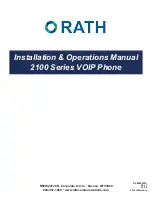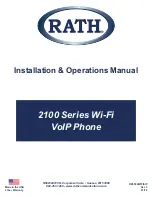
Section 4: Safety Guidelines and Warranty Information
210 4A: Safety
Getting the Most Out of Your Reception
Keeping Tabs on Signal Strength
The quality of each call you make or receive depends on the signal
strength in your area. Your device informs you of the current signal
strength by displaying a number of bars next to the signal strength icon.
The more bars displayed, the stronger the signal. If you’re inside a
building, being near a window may give you better reception.
Understanding the Power Save Feature
If your phone is unable to find a signal after 15 minutes of searching, a
Power Save feature is automatically activated. If your phone is active, it
periodically rechecks service availability or you can check it yourself by
pressing any key. When a signal is found, your phone returns to standby
mode.
Understanding How Your Phone Operates
Your phone is basically a radio transmitter and receiver. When it’s turned
on, it receives and transmits radio frequency (RF) signals. When you use
your phone, the system handling your call controls the power level. This
power can range from 0.006 watts to 0.341 watts in digital mode.
Knowing Radio Frequency Safety
The design of your device complies with updated NCRP standards
described below. To further limit RF exposure, you can limit the duration
of your calls and operate your device in the most power-efficient manner.
In 1991-92, the Institute of Electrical and Electronics Engineers (IEEE)
and the American National Standards Institute (ANSI) joined in
updating ANSI’s 1982 standard for safety levels with respect to human
exposure to RF signals. More than 120 scientists, engineers and
physicians from universities, government health agencies and industries
developed this updated standard after reviewing the available body of
research. In 1993, the Federal Communications Commission (FCC)
adopted this updated standard in a regulation. In August 1996, the FCC
adopted hybrid standard consisting of the existing ANSI/IEEE standard
and the guidelines published by the National Council of Radiation
Protections and Measurements (NCRP).
Summary of Contents for SH-G1000
Page 1: ...User s Guide PCS Vision Picture Phone with Built in Camera Hitachi SH G1000 ...
Page 8: ...4B Customer Limited Warranty 247 Customer Limited Warranty 248 Index 253 ...
Page 10: ...2 ...
Page 12: ...4 ...
Page 13: ...Section 1 5 Getting Started Section 1 Getting Started ...
Page 14: ...6 ...
Page 19: ...Section 2 11 Understanding Your Device Section 2 Understanding Your Device ...
Page 20: ...12 ...
Page 74: ...Section 2 Understanding Your Device 66 2A Your PCS Phone The Basics ...
Page 86: ...Section 2 Understanding Your Device 78 2B Using Your Phone ...
Page 110: ...Section 2 Understanding Your Device 102 2D Controlling Your Device s Settings ...
Page 114: ...Section 2 Understanding Your Device 106 2E Controlling Your Roaming Experience ...
Page 132: ...Section 2 Understanding Your Device 124 2G Using Microsoft Pocket Outlook ...
Page 136: ...Section 2 Understanding Your Device 128 2H Using Your Phone s Voice Services ...
Page 186: ...Section 2 Understanding Your Device 178 2K Connecting with a Personal Computer ...
Page 193: ...Section 3 185 Using PCS Service Features Section 3 Using PCS Service Features ...
Page 194: ...186 ...
Page 210: ...Section 3 Using PCS Service Features 202 3B PCS Vision ...
Page 214: ...Section 3 Using PCS Service Features 206 3C PCS Voice Command ...
Page 216: ...208 ...
Page 259: ...251 ...
Page 264: ...256 Index ...
















































